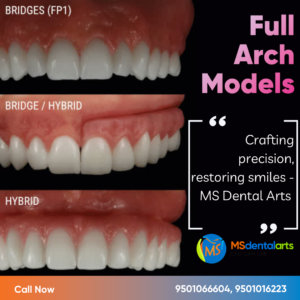All-On-Four Dental Implant Procedure: An Easy and Cost-Effective Solution for Missing Teeth
By Sarfraz Ahmed
Losing one or more teeth can be a traumatic experience, both emotionally and physically. You may find yourself feeling self-conscious about your appearance, struggling to eat your favorite foods, and dealing with discomfort or pain. Fortunately, dental implants provide a long-lasting and effective solution for missing teeth. And if you’re looking for an easy and cost-effective way to replace multiple missing teeth, the All-On-Four dental implant procedure may be the perfect option for you.
What Is All-On-Four?
All-On-Four is a revolutionary dental implant technique that allows for a full arch of replacement teeth to be secured with just four dental implants. Unlike traditional implant procedures that require individual implants for each missing tooth, All-On-Four utilizes two implants in the front of the mouth and two in the back, providing maximum stability and support for the replacement teeth.
Why Choose All-On-Four?
There are several benefits to choosing the All-On-Four dental implant procedure:
-
Minimally invasive: All-On-Four is much less invasive than traditional implant techniques, which can require multiple surgeries and a longer recovery time. Because All-On-Four utilizes fewer implants, the procedure is faster and easier for both you and your dentist.
-
Faster recovery: With All-On-Four, you can expect a faster recovery time than with traditional implant procedures. Because the procedure is less invasive, you’ll experience less discomfort and swelling, allowing you to get back to your normal routine sooner.
-
Fewer office visits: With All-On-Four, you can often complete the entire procedure in just one visit to your dentist, which means fewer appointments and less time away from work or other obligations.
-
Cost-effective: All-On-Four is often more cost-effective than traditional implant procedures because it requires fewer implants and office visits. And with the long-lasting results of All-On-Four, you’ll be making a wise investment in your dental health and overall well-being.
-
Natural-looking results: All-On-Four provides a natural-looking and functional set of replacement teeth that will allow you to smile and eat with confidence again.
At MS Dental Arts, our team of experienced dentists and oral surgeons are dedicated to making the All-On-Four procedure as easy and stress-free as possible. We use the latest dental technology and techniques to ensure that you receive the best possible care and results.
If you’re considering dental implants, schedule a consultation with us today to learn more about how the All-On-Four procedure can give you the smile you’ve always wanted. We’ll work with you to create a personalized treatment plan that meets your unique needs and goals. With All-On-Four, you can enjoy a comfortable, natural-looking, and long-lasting solution for missing teeth.
Our licensed and skilled technicians are constantly to be had for case consultations and might help you with case planning. Get in touch now





